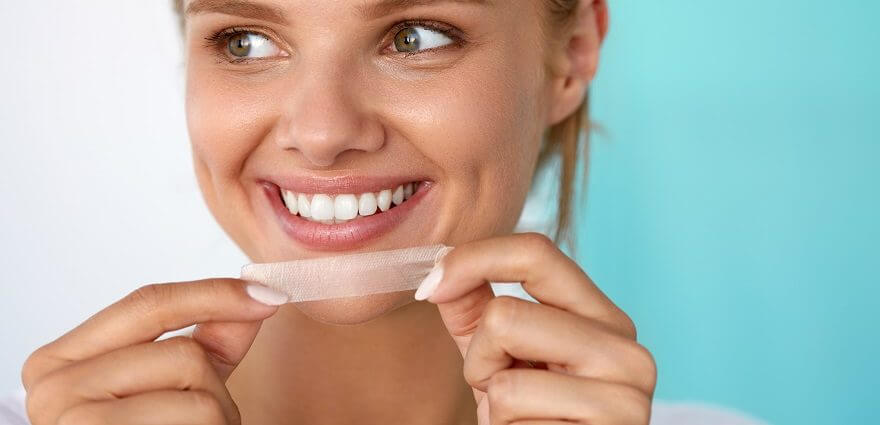Content Attributes
There are several reasons why our teeth lose their natural white color. Whether it’s because of smoking cigarettes or aging, this can be reversed through teeth whitening. And, when it comes to teeth whitening, there are different options available. One of these options is DIY teeth whitening, something that you can do from the comfort of your home.
Today, different teeth whitening kits can be purchased over the counter. Besides, other natural remedies can help remove stains on your teeth and restore that sparkling white color. Now, regardless of the teeth whitening procedure that you choose, there’s one thing that you should be wary of—the safety of the procedure.

That means you need to choose a safe teeth whitening procedure to avoid causing damage to your teeth. This post will discuss whether DIY teeth whitening is safe and the different DIY teeth whitening procedures that you can do from your home.
Should you do DIY teeth whitening?
The professional dentists from the San Diego teeth whitening clinic, Bajars&Bajars say that DIY teeth whitening is very safe—as long as you use the right and safe whitening products. Besides, it’s recommended that you have a professional dentist examine your teeth and check for any problems like cracks or cavities before attempting DIY teeth whitening. Please note that these issues can irritate your pulp—which can be very painful.
With that said, let’s look at the most common DIY teeth whitening methods.
Oil pulling with coconut oil
One of the easiest and most popular DIY teeth whitening methods is using coconut oil. Coconut oil contains lauric acid, which helps remove plaque and bacteria from your teeth.
To do this, take 1-2 teaspoons of coconut oil and swish it around in your mouth for 10-20 minutes. Then, spit it out into the trashcan (not down the drain) and rinse your mouth with water. Do this procedure once a day for two weeks to see visible results.
Teeth whitening toothpaste
Another popular method of DIY teeth whitening is by using teeth whitening toothpaste. This type of toothpaste typically contains baking soda and peroxide, which helps to remove surface stains on your teeth. To use this method, brush your teeth with the toothpaste for two minutes and then rinse your mouth with water. Do this procedure twice a day for two weeks to see visible results.
Activated charcoal
Activated charcoal is known to be a powerful natural teeth whitener. It works by adsorbing (not absorbing) plaque and other organic material on your teeth’s surface. To do this, wet your toothbrush and dip it into the activated charcoal. Brush your teeth for two minutes, then rinse your mouth with water. Do this procedure once a day for two weeks to see visible results.
Whitening strips
Whitening strips are thin plastic strips coated in a teeth-whitening gel. When applied to your teeth, the gel will help to remove surface stains on your teeth.
Peel off the strip and apply it to your upper and lower teeth to use this method. Leave it on for 30 minutes, then rinse your mouth with water. Do this procedure twice a day for two weeks to see visible results.
Teeth whitening kit
If you’re looking for a more professional teeth whitening procedure, then you can purchase a teeth whitening kit from your local pharmacy or online. This type of kit typically contains a bleaching agent (like peroxide) and a tray that fits over your teeth.
To use this method, follow the instructions that come with the kit. Typically, you will need to apply the bleaching agent to the tray and then fit the tray over your teeth. Leave it on for 30 minutes, then rinse your mouth with water. Do this procedure twice a day for two weeks to see visible results.
Baking soda and lemon juice
Baking soda and lemon juice is a popular home remedy for teeth whitening. The baking soda helps to remove surface stains on your teeth, while the lemon juice helps to kill bacteria and whiten your teeth.
To do this, combine 1/2 teaspoon of baking soda with 2 teaspoons of lemon juice. Swish the mixture around in your mouth for two minutes, then spit it out into the trash can (not down the drain). Do this procedure once a day for two weeks to see visible results.
DIY teeth whitening precautions
DIY teeth whitening is a great way to achieve brighter teeth without spending a lot of money. However, before attempting any DIY teeth whitening methods, it’s important to be aware of the risks and precautions involved.
Some of the most common risks and precautions associated with DIY teeth whitening include:
- Using the wrong type of product can cause irritation or even burns to your gums and mouth
- If you have any dental problems (like cavities or cracks), DIY teeth whitening can make them worse
- Swallowing the teeth whitening product can cause nausea, vomiting, and other health problems
- Whitening products can also discolor your teeth if not used correctly
- If you experience any irritation or pain after using a teeth whitening product, discontinue use and consult your dentist
- Always read the instructions that come with the teeth whitening product before use
- Do not leave the bleaching agent on your teeth for longer than the recommended amount of time
So, before attempting any DIY teeth whitening methods, it’s important to consult with your dentist to make sure that it’s safe for you to do so. Dentists can also advise you on which type of DIY teeth whitening method would be best for you and how to use it safely and effectively.